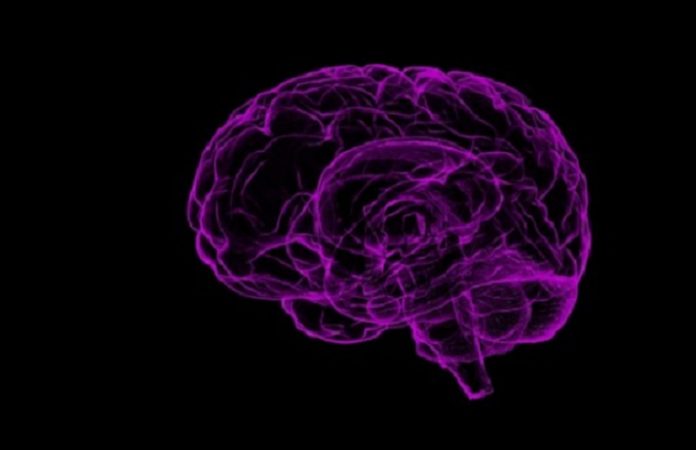Transcranial Electromagnetic Treatment (TEMT) shows promising ability to treat Alzheimer’s disease.
Alzheimer’s disease was first described by Dr. Alois Alzheimer in 1906 and yet, some 113 years later, treatment for the disease is still limited to targeting symptoms. There has been a consistent failure to develop a drug that successfully modifies the disease itself. There are many reasons for this, the failure to fully understand the exact mechanisms of the disease process being one of them.
However, a new study, published in the Journal of Alzheimer’s Disease explores a promising alternative approach to treatment. The study authors argue that the consistent failure to develop a disease-modifying Alzheimer’s drug is explained by two facts. Firstly, many drugs, especially larger protein-based molecules, have difficulty crossing from the bloodstream into the brain. Secondly, they suggest that targeting the characteristic amyloid-beta plaques and neurofibrillary tangles, as most potential treatments do, is intervening too late in the disease process.
These amyloid-beta plaques and neurofibrillary tangles are large insoluble clumps of protein but both begin as much smaller, soluble, bite-size chunks. The idea here is that by targeting these smaller chunks before they clump together, you can target the disease itself. But given the difficulty that drugs have in passing from the bloodstream into the brain, how do you target them?
If the drugs don’t work, perhaps a non-pharmaceutical intervention could be the answer? Enter transcranial electromagnetic treatment or TEMT for short. A variety of electrical and/or magnetic treatment approaches have been tried to no avail in the past. TEMT however, uses electromagnetism. Whenever current is flowing, an electromagnetic field is created. This field consists of electric field waves and magnetic field waves which are perpendicular to one another. The rate at which these waves move up and down is known as the frequency. TEMT uses waves with a frequency of approximately 1 GHz. This frequency can easily pass through the human skull and brain tissue, clearing the barrier which has halted many pharmaceutical treatments.
Before attempting this trial in human Alzheimer’s patients, the research team had demonstrated both the safety and efficacy of TEMT in mice.
So, how did they test it?
The first thing the research team needed to do was to design and build a device suitable for delivering TEMT to human patients, the MemorEM™ headset. This headset has eight transmitters, which, when activated, transmit electromagnetic waves at a frequency of 915MHz.
The study only involved eight patients, each with mild to moderate Alzheimer’s disease. Each participant had to be at least 63 years old and had to have scored between 16 and 26 on the Mini Mental State Exam (MMSE), a score indicating mild to moderate dementia.
To remove the possibility of medication affecting the study outcome, patients’ Alzheimer’s medication had to have been unchanged in the three months leading up to the study as well as for the duration of the study.
At the beginning of the trial, patients underwent a variety of scans to record the extent of Alzheimer’s-induced damage to their brain tissue and glucose metabolism in the brain. They were also tested for their cognitive function.
Throughout the two months of the trial, patients received morning and late-afternoon treatment with TEMT, with each treatment lasting one hour. These treatments were administered and supervised by caregivers trained to operate the MemorEm™ headset. Patients were routinely assessed at various points throughout the trial to ensure patient safety.
So, did it work?
Seven of the eight patients showed a clear improvement in cognitive function at the end of two months. When patients were followed up two weeks after the end of the treatment, this improvement had waned to varying degrees in four of the subjects. There was one subject who did not respond to the TEMT. This patient displayed a decline in cognitive function over the entire duration of the study. This decline was within the range expected for an Alzheimer’s patient. For the group as a whole, their immediate recall and five-day recall abilities were significantly improved. However, for some measures of cognitive function (e.g., MMSE), no improvements were observed.
When comparing spinal fluid samples from baseline to day 60, significant changes were observed. Levels of soluble amyloid-beta were increased at day 60. This result suggests that the electromagnetic waves may be breaking up insoluble chunks of amyloid-beta into smaller, soluble pieces. The treatment did not have an effect on the levels of soluble tau protein. Nor did they observe any significant change in glucose metabolism. However, in the case of glucose metabolism, it was anticipated that the study time of two months would likely be too short to observe any noticeable difference.
What are the implications or limitations of these results?
Of course, the first major caveat with this study is the sample size. The results of any trial with only eight participants must be viewed with a degree of caution. However, the study produced two significant results. Firstly, any intervention that safely improves cognitive function in Alzheimer’s patients must be welcomed. In this respect, the results of the study are promising and warrant further exploration with a larger patient group. Secondly, the increase in soluble amyloid beta protein observed is significant. This study explored two questions, whether TEMT could improve cognitive function and it also tested a hypothesis for how this might occur. The increase in soluble amyloid beta is key to understanding why TEMT might be effective and again opens up avenues for further testing. Overall, there is much work to do before Alzheimer’s patients can truly get their hopes up but these initial results are certainly promising.
Written by Michael McCarthy
Reference:
Arendash G, Cao C, Abulaban H, Baranowski R, Wisniewski G, Becerra L, et al. A Clinical Trial of Transcranial Electromagnetic Treatment in Alzheimer’s Disease: Cognitive Enhancement and Associated Changes in Cerebrospinal Fluid, Blood, and Brain Imaging. J Alzheimers Dis. 2019;71(1):57-82.
Image by Raman Oza from Pixabay



